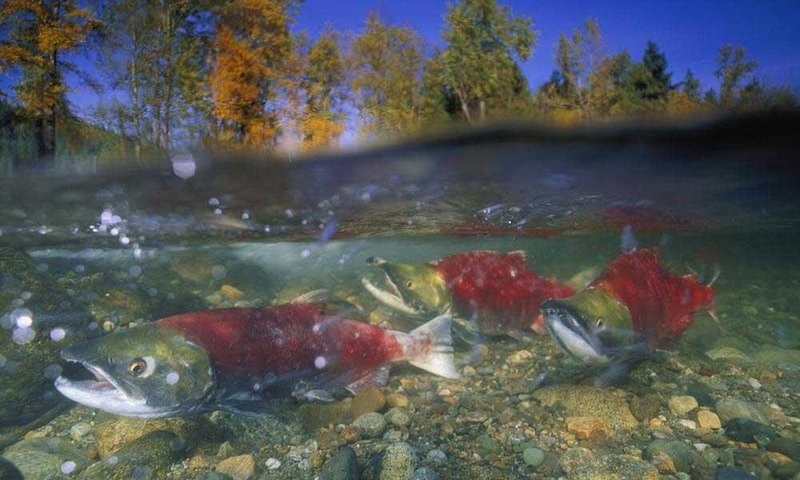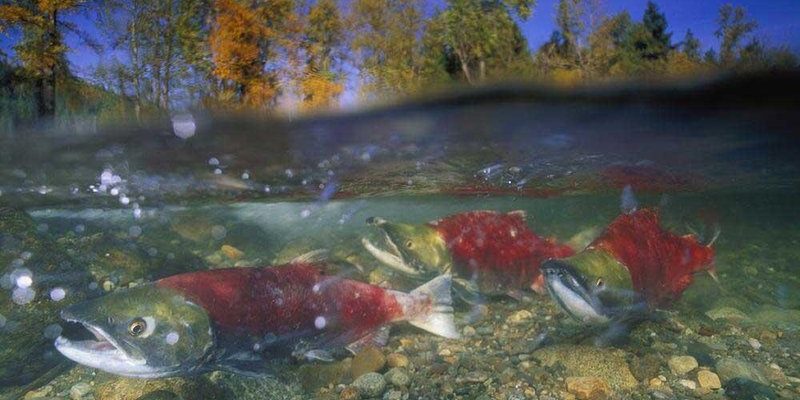
Salmon are not just any fish; they’re a keystone species, meaning they play a crucial role in the health of their environment. Imagine them as the canaries in the coal mine for aquatic ecosystems. When salmon struggle, it doesn’t just affect them; it affects everything else, including the wildlife, plants, and even humans who rely on healthy rivers and oceans. So, what are these threats? Let’s break it down.
Habitat Loss and Degradation
Salmon are sensitive creatures, and their habitats are essential for their life cycles. They spend the early part of their lives in freshwater rivers and streams before heading out to the ocean. But with urban development, logging, and agriculture, their habitats are often destroyed or changed beyond recognition.
You might be wondering how this affects salmon. When rivers are dammed or altered, it disrupts their migratory paths. Imagine trying to navigate a maze where the walls keep shifting! Adult salmon can’t reach spawning grounds, and young salmon can’t find safe places to grow. Without appropriate habitats, their populations can plummet, impacting the entire ecosystem.
Additionally, pollution from chemicals, plastics, and waste can harm their environment. Think of it like inviting friends over for dinner but serving them spoiled food. Salmon need clean water to thrive, and pollution disrupts their health and the balance of the entire ecosystem.
Climate Change
Climate change is the overarching threat that affects nearly all life, including salmon. As temperatures rise, the water in rivers and oceans warms up, altering the delicate balance salmon need. Warmer water can lead to less oxygen, which is crucial for salmon to survive.
Here’s the thing—you might not realize this, but salmon are also extremely sensitive to temperature changes. Increased water temperatures can cause migrations to shift. They may arrive at their spawning grounds too late or too early, missing the optimal conditions for breeding. Imagine showing up at a party when everyone has already left!
Furthermore, climate change can lead to more frequent and severe weather events, like floods and droughts. These extremes can severely impact spawning sites and the food sources necessary for young salmon to grow.
Overfishing
Overfishing is another significant threat to wild salmon populations. When fishing pressures increase without proper management, it can drastically reduce their numbers. This isn’t just about people enjoying a salmon steak; it’s about sustainability.
When salmon are caught faster than they can reproduce, the balance of the ecosystem gets thrown off. It’s like taking too many pieces from a puzzle; the picture just doesn’t come together. Fisheries need to abide by regulations that limit how many fish can be caught, ensuring that enough salmon remain in the wild to spawn successfully.
Moreover, bycatch, which occurs when other species are unintentionally caught while fishing for salmon, adds another layer to this problem. This not only decreases salmon populations but can also harm other fish that share their environment.
Invasive Species
Invasive species are like uninvited guests crashing a party; they disrupt everything! In the case of salmon, species such as sea lampreys and certain non-native fish can outcompete them for food and breeding grounds.
These invaders can cause significant harm to fish populations. For instance, sea lampreys latch onto salmon and suck their blood, weakening them and making them more vulnerable to disease. If salmon can’t find enough resources or face predation from these invasive invaders, their populations may decline.
Moreover, invasive plant species can alter river ecosystems by changing water flow and quality. It’s a chain reaction that can lead to the loss of salmon habitats, aggravating their already challenging circumstances.
Pollution
Pollution is a significant barrier to the survival of salmon, impacting their habitats and overall health. Various forms of pollution—like agricultural runoff, industrial waste, and plastic debris—contaminate their waters.
Imagine trying to swim in a pool filled with garbage—it wouldn’t feel great, right? Salmon experience something similar. Polluted waters can lead to diseases, reduce their reproductive success, and hinder their ability to find food. Moreover, some pollutants can accumulate in their bodies, making them unsafe for humans and other wildlife that rely on them as a food source.
Stormwater runoff can also be a big problem. It transports trash, chemicals, and sediments into rivers, damaging spawning habitats and degrading water quality. It’s a cycle where polluted waters lead to sick salmon, which in turn can affect those who rely on them.
Natural Predators
Predation is a natural part of ecosystems, and while it’s vital for maintaining balance, it can pose a significant threat to salmon populations. Various animals, including birds, bears, and larger fish, prey on salmon, particularly during their vulnerable spawning and migratory phases.
While predation is natural, the survival of salmon is precarious, especially when combined with other stressors like habitat loss or pollution. For example, when salmon populations dwindle due to habitat degradation or overfishing, even few predators can significantly impact remaining salmon stocks.
Think about it: if there are fewer salmon swimming upstream, predators will have less food, but they still have to eat. This creates a ripple effect throughout the ecosystem, impacting the predator populations as well.
Salmon are incredible creatures with fascinating life cycles, but they face many threats in the wild. From habitat loss and climate change to pollution and invasive species, it’s crucial that we recognize these challenges.
Here’s the thing: when we protect salmon, we’re also protecting the ecosystems they support, including our local waterways. It’s a team effort—governments, communities, and individuals all play a role in ensuring the health of salmon populations for generations to come. With awareness and action, we can help maintain the balance of nature and keep these beautiful fish thriving where they belong.

